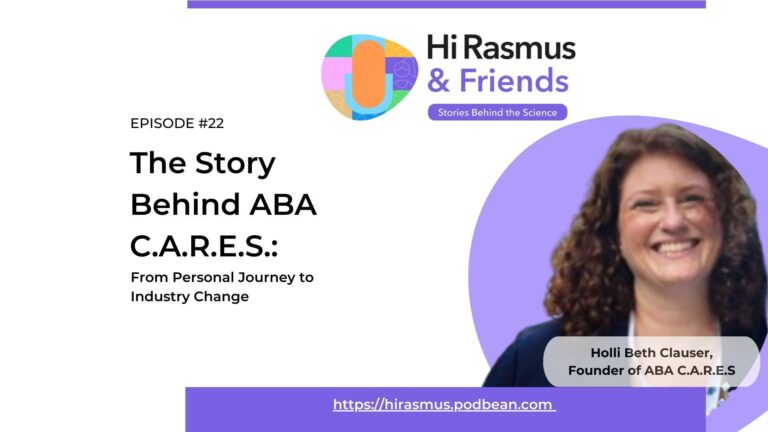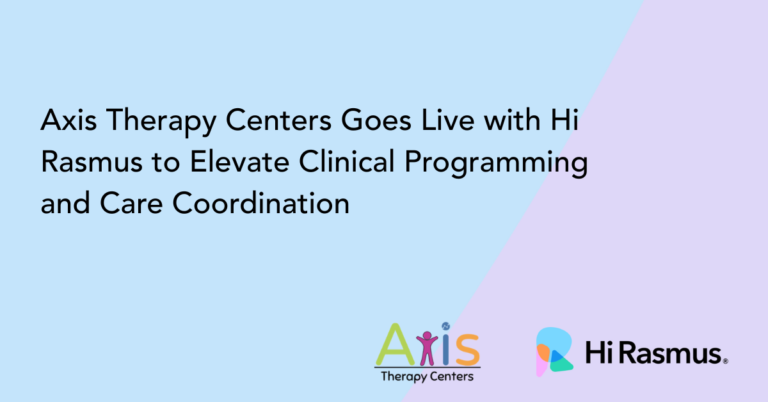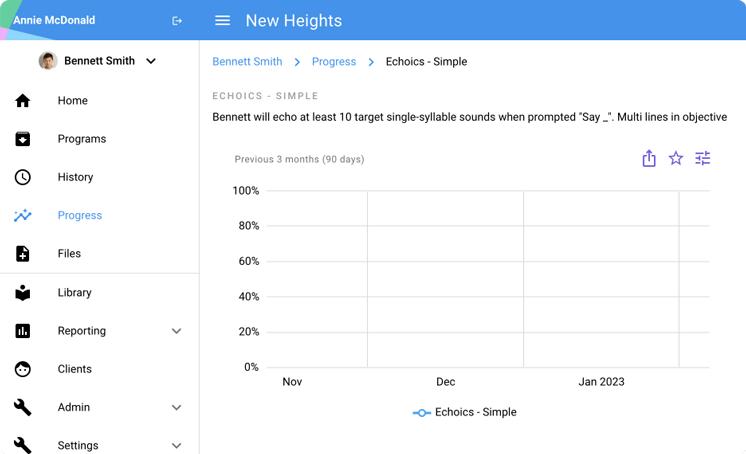The behavioral health field faces a persistent challenge: bridging the gap between evidence-based staff training practices and real-world implementation. While we know competency-based training delivers better outcomes than traditional didactic approaches, resource constraints and high turnover rates often prevent organizations from delivering the comprehensive training their teams deserve.
Recent research from Hi Rasmus reveals how technology can transform this landscape, making evidence-based staff training more accessible while directly improving client outcomes. Here’s what behavioral health organizations need to know about leveraging digital tools to enhance both staff competency and the care they provide to children.
The Current State of Staff Training in ABA
A 2022 study of 578 ABA practitioners revealed significant gaps between best practices and reality (Blackman et al., 2022). Only 56% of professionals reported that they felt prepared for their roles after initial training, with most receiving just 1-3 days of preparation. Even more concerning, ongoing training often lacks the systematic approach needed to maintain treatment integrity over time.
Common Barriers to Effective Staff Training
Resource Intensity: True competency-based training requires significant time investment from skilled supervisors who often wear multiple hats within their organizations.
High Turnover: The constant need to train new staff while replacing departing team members creates an overwhelming demand on training resources.
Technology Overload: Many organizations utilize multiple disconnected systems for training, resulting in inefficiencies and reducing the likelihood of consistent implementation.
Limited Feedback Systems: Without permanent products and visual data representation, valuable training insights get lost, making it difficult to track progress and maintain accountability.
Research-Backed Evidence: Staff Training Technology Improves Client Outcomes
Hi Rasmus conducted a comprehensive study examining whether technology-enhanced staff training directly impacts client outcomes. The results provide compelling evidence for the clinical significance of systematic staff development.
Study Design and Methodology
The research compared two groups:
- Training group: 286 clients from 10 organizations consistently using Hi Rasmus Staff Profiles
- Control group: 286 clients from 12 organizations not using Hi Rasmus Staff Profiles
Clients from both groups were measured on the rate of skill acquisition (mastered targets per session hour) during 30-day periods before and after the training intervention.
Key Findings
Statistically Significant Improvements: The training group demonstrated significant improvements in client outcomes after an average of 105 days of technology-enhanced staff training, whereas the control group showed no meaningful change.
Clinical Significance: In this study, the experimental group’s average rate of skill acquisition increased from 0.49 to 0.67 mastered targets per session hour – a 36% improvement. Conceptually, this means that with 3 hours of therapy per day, learners could move from mastering 1.5 to 2.0 skills per day. Over a typical 60-hour month, learners who receive 3 hours of therapy per day could, in theory, master 11 additional mastered targets, representing faster acquisition with meaningful implications for independence and developmental outcomes.
Sustained Impact: The technology-enhanced training approach demonstrated lasting effects on client progress, with higher baseline scores predicting continued success post-training.
Building Smarter Systems: Beyond Basic Training
Organizations using staff training technology are discovering innovative ways to leverage their data for broader organizational improvements:
1. Competency-Based Career Pathways
Forward-thinking organizations utilize staff performance data to establish clear growth pathways based on demonstrated skills, rather than relying solely on tenure. This approach fosters transparency, accountability, and tailored professional development.
2. Objective Leveling Systems
Structured career stages aligned with staff competencies, experience, and measurable impact create fairer promotion processes while maintaining motivation through clear, data-driven advancement criteria.
3. Performance-Based Recognition
Some organizations tie bonuses and recognition to meaningful metrics, such as client outcomes and documentation quality, using staff profile data to reward high-impact work that aligns with their mission.
4. Staff-Centered Outcomes Reporting
Comprehensive reporting on staff experiences, growth, and contributions helps organizations build stronger, more engaged workforces while identifying areas for targeted support.
Key Components of Effective Technology-Enhanced Training
Based on the research findings, successful staff training technology should include:
Integrated Data Collection: The ability to collect both client and staff performance data within a single platform eliminates the technology overload that hampers many training initiatives.
Visual Performance Tracking: Graphical representations of staff progress provide immediate feedback and create permanent products for reflection and goal-setting.
Customizable Training Programs: Flexibility to address organization-specific competencies while maintaining evidence-based training principles.
Concurrent Session Management: The ability to supervise client sessions while simultaneously collecting staff competency data maximizes efficiency without compromising quality.
Automated Reporting: Streamlined data analysis and report generation reduce administrative burden while providing actionable insights.
Implementation Considerations
Focus on Clinical Significance
While statistical significance is important, the objective measure of success is a meaningful improvement in client outcomes. Technology should facilitate, not replace, the human elements that make training effective.
Sustainable Training Models
Choose technology that supports long-term sustainability by reducing the resource burden on supervisors while maintaining training quality and consistency.
Moving Forward: Questions for Your Organization
As you consider how technology might enhance your staff training initiatives, reflect on these key questions:
- Does your organization offer competency-based staff training? If training relies primarily on verbal instructions or written materials, there’s significant room for improvement.
- What barriers exist in your current training model? Identifying specific challenges—whether resource constraints, technology overload, or lack of data systems—helps guide solution selection.
- Are you measuring the impact of training on client outcomes? The most meaningful metric for training effectiveness is whether it improves the lives of the children and families you serve.
- How could staff training data improve other organizational processes? Consider opportunities for career development, performance recognition, and strategic planning.
The Path to Improved Outcomes
The research is clear: systematic, technology-enhanced staff training not only improves staff competency but also directly benefits client outcomes. For behavioral health organizations committed to delivering the highest quality care, investing in evidence-based training technology represents both a strategic advantage and a mission-critical imperative.
Your staff deserves tools that support their professional growth while reducing administrative burden. More importantly, the children and families you serve deserve the benefits that come from well-trained, confident, and supported care teams.
The question isn’t whether your organization can afford to invest in comprehensive staff training technology—it’s whether you can afford not to.
References:
Blackman, A. L., DiGennaro Reed, F. D., Erath, K., & Henley, A. J. (2022). Training practices in
applied behavior analysis: A national survey. Behavior Analysis in Practice, 15(2),
467–479. https://doi.org/10.1007/s40617-021-00656-2









